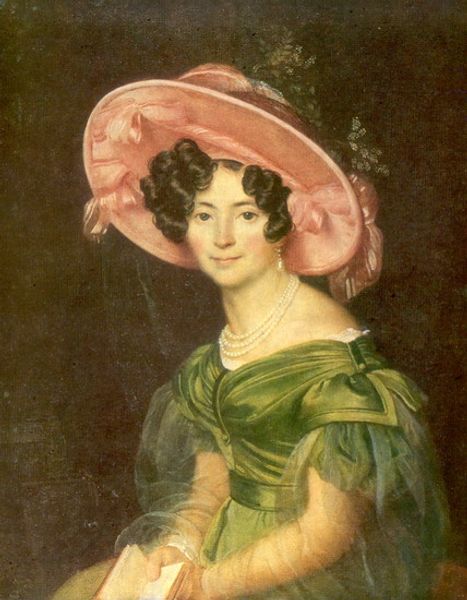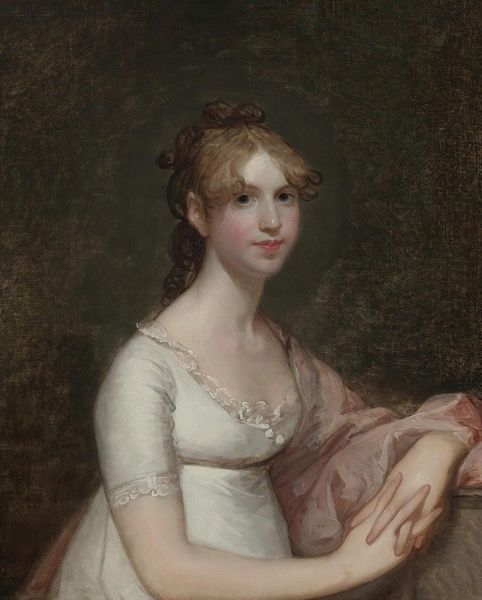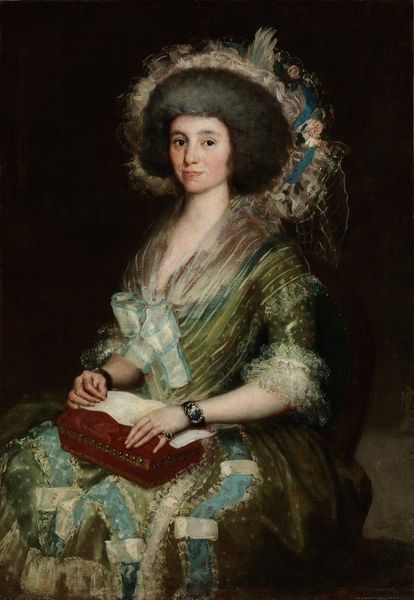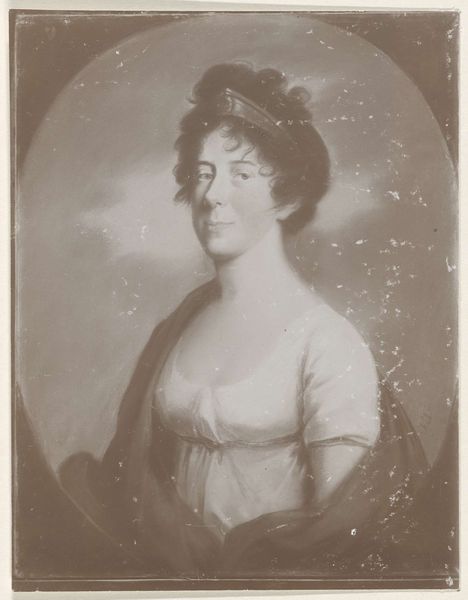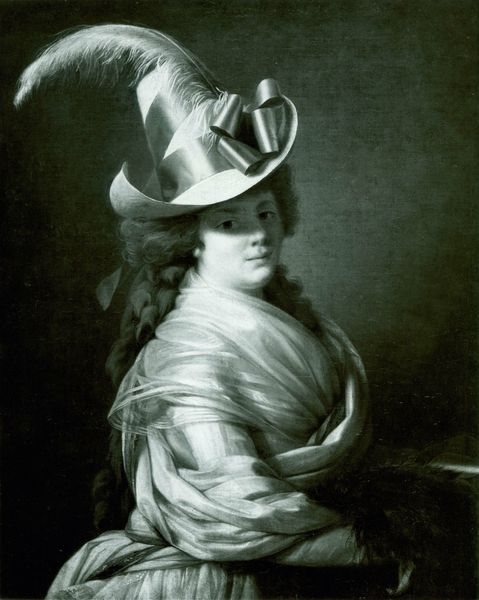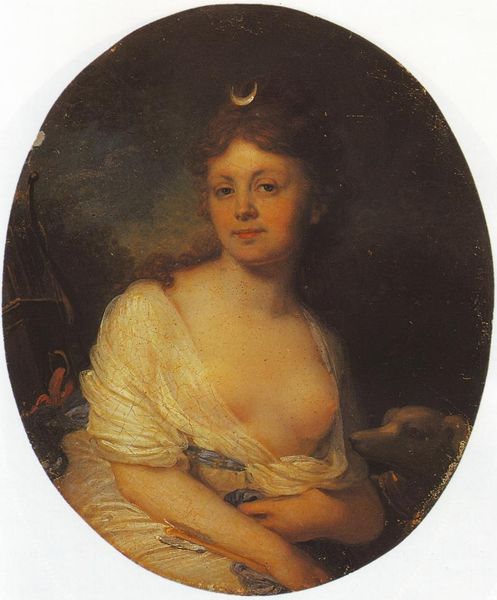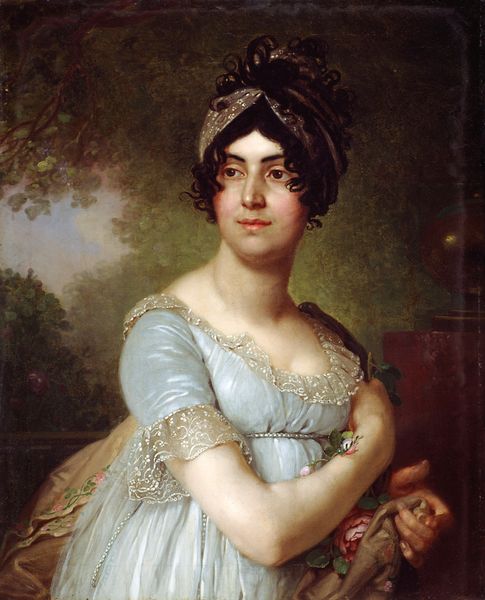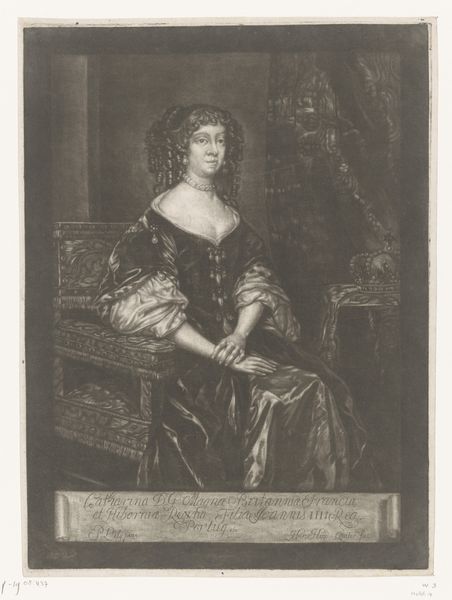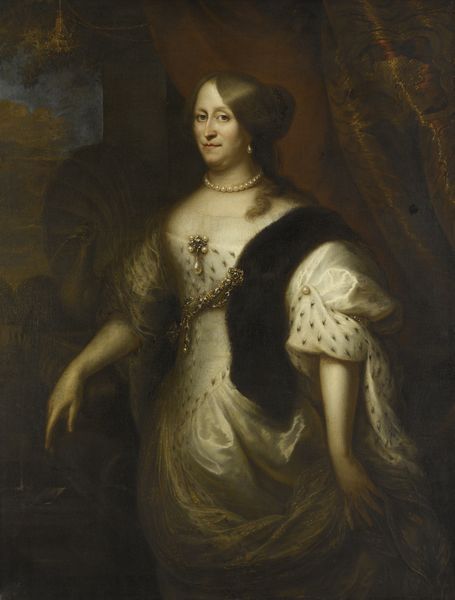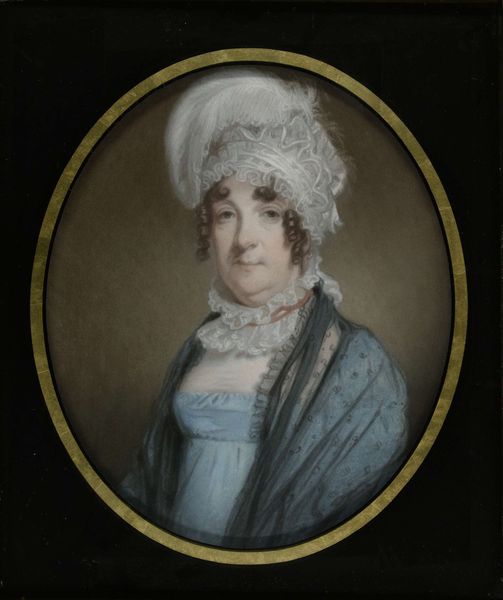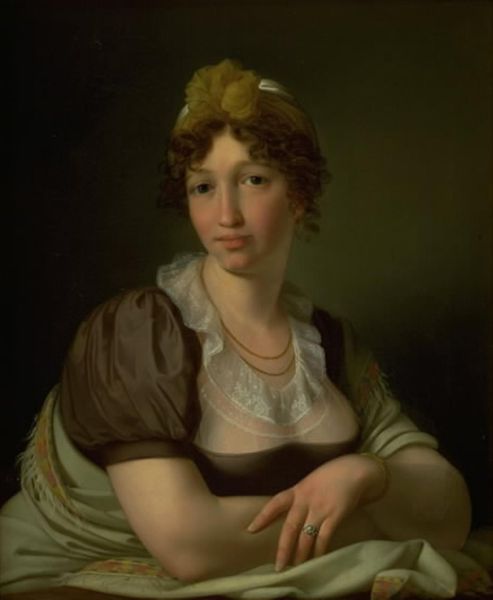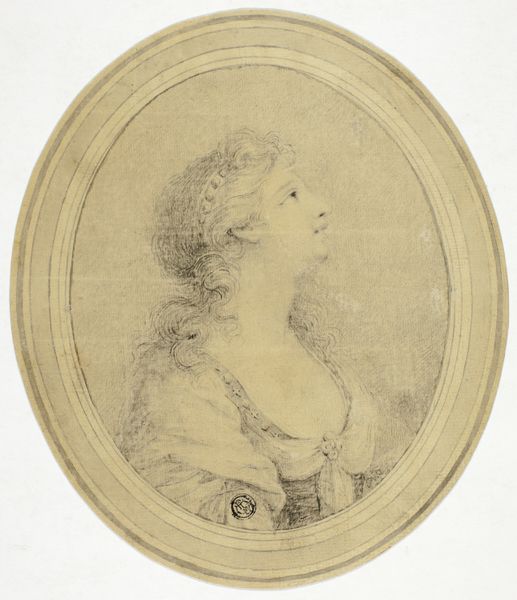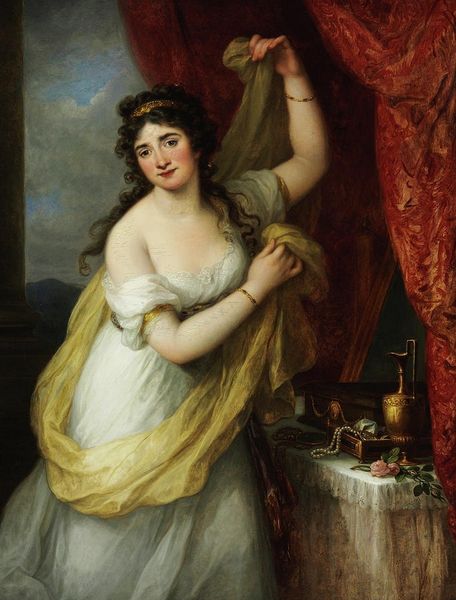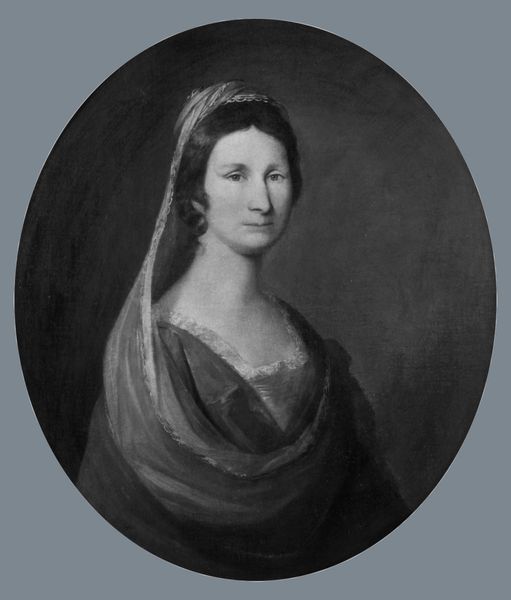
painting, oil-paint
#
portrait
#
baroque
#
painting
#
oil-paint
#
genre-painting
#
history-painting
#
academic-art
#
realism
Dimensions: 148.5 x 113.5 cm
Copyright: Public domain
Curator: Here we have Antoine Pesne's "Portrait of Mary Susanne Dinglinger, born Gutermann," painted in 1721. It's currently held in the Hermitage Museum. What are your initial thoughts? Editor: Immediately, there's a darkness to the color palette that lends the subject a sense of melancholy, even perhaps a veiled rebellion. And that enormous hat! Curator: It is striking, isn't it? What interests me about this piece is Pesne's technique – the layering of the oil paints, the textures he creates to render fabrics and skin tones so realistically. You can almost feel the silk of her gown. The means of production alone suggest an affluent sitter. Editor: Absolutely, and the pose itself speaks volumes about her societal position. Note the contrast in how women were represented versus men, typically more rigid and in positions of power, but here we see relaxation and subtle vulnerability. Curator: Considering the period and its academic approach, though, this softness may very well have been a calculated construction. What could the implications be, positioning women so subtly? Was this a negotiation between agency and expectation? Editor: A powerful observation! Mary Susanne clearly belonged to a privileged social stratum, evidenced not only by her clothes, her proximity to the artists, but also her likeness rendered through the time and resources it took for oil painting, reserved for elites. The gesture of holding a writing tool alongside the unfinished writing begs many questions: Was she involved in commerce, family affairs, or artistic work of her own? Curator: Indeed, she clearly possessed a certain level of education and influence. This portrait underscores the interplay between individual identity and societal role through material culture. The labor of her sartorial choices are equally on display, and can’t be ignored here. Editor: Absolutely. And understanding Pesne's background in the court of Frederick the Great sheds even more light. These portraits of powerful women are political as much as personal, revealing complex power dynamics within aristocratic circles. What message was Pesne tasked with creating for such important patrons? Curator: Reflecting on it all, the portrait is far more complex than a mere record of physical appearance, is it not? It offers a window into the complex layers of 18th-century societal values, commerce, and craftsmanship. Editor: Agreed. It reminds us that art can often operate as both a mirror and a critique of its own time.
Comments
No comments
Be the first to comment and join the conversation on the ultimate creative platform.
